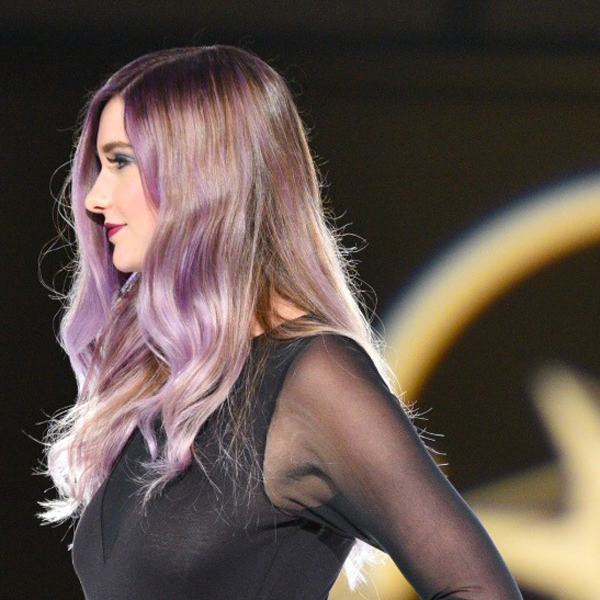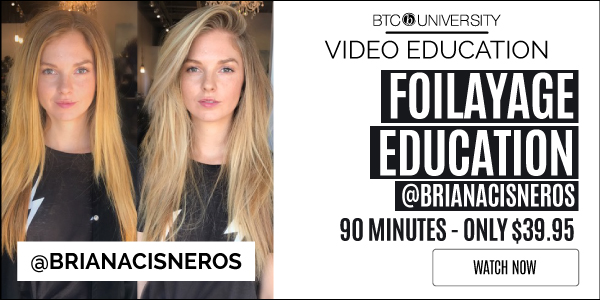Last updated: May 20, 2018
Toning & Glossing: What You’re Doing & Why It’s Not Working
Glossing and toning—it’s the top coat to haircolor, but it gets overlooked and rushed through way more often than it should. We caught up with Matrix Artistic Director Lenny Strand at Matrix Destination 2018 and got some pointers on the toning process—like what most colorists are doing, why it’s not working and how they can improve their techniques to create prettier end results and up their ticket prices.
Oh and we should mention, Lenny is a colorist at Sally Hershberger Salon in LA, so he’s knows a thing or two about beautiful blonde color and sun-kissed dimension. Here’s what he told us.
What colorists are doing:
- This is how toning services usually go according to Lenny: “Hairdressers are coloring in the dark, on soaking wet hair and in a black bowl that offers no reflection. The service no longer becomes a technique, it just sort of becomes part of the shampoo, and that’s a problem.”
Why it’s not working:
- Hair looks different wet than dry. For example, blonde hair typically looks very yellow when it’s wet, but as it dries it gets more buttery or ashy. If you gloss on soaking wet blonde hair, colorists tend to overcompensate for that yellow/orange, and then get results that turn flat or too ashy.
- Toning and glossing formulas are usually created with semi-permanent or demi-permanent color, and when those are applied on wet hair, it automatically compromises the longevity of product and color.
What colorists should do:
- Towel-dry the hair and comb it out at the bowl, then take the guest back to the chair where there is good lighting.
- Continue to dry the hair until it’s 70 percent dry. This way, you can read the color better and create softer, more precise formulas.
- Turn it into a technique. Lenny either uses multiple formulas or one formula and then applies it for different amounts of time in different areas of the head. For example, the same formula can be used 20 minutes at the base, 10 minutes at the mids and 5 minutes at the ends to create a gradient end result.
- Remember this: how you process, formulate and apply, and doing so at the chair where your client can visually see what is happening can turn a $25 service into a $40 or $50 service.
More from
Matrix
-
Celebrity
The Best Beauty Looks At The 2024 Oscars
-
Blonde
The Biggest Hair Color Trends of 2024
-
Industry Events
Matrix Announces The Color Pop-Up Tour 2024
-
Award-Winning
Tailored
-
Matrix
Sandy Lived-In Blonde
-
Gifts
10 Hair Gift Sets Sure To Spread Joy This Holiday Season
-
Blonde
Blonde Ribboned Root Smudge
-
Hair Color
Bold Color Trends You Need To Know For 2024
-
Gray
Toning Relaxed Grays: How To Avoid The Yellow/Green Fade
-
Balayage
3 Tips For Balayaging 3C Curls
-
News
The Hottest Hair Product Launches Of Summer 2023
-
Blonde
6 Blonding Techniques To Save Your Client’s Hair
-
Product Launches
The Last Product Launch Before Summer 2023
-
Serums
Food For Soft Multi-Use Hair Oil Serum
-
Treatments/ Masks
Food For Soft Rich Hydrating Treatment Mask
-
Shampoos
Food For Soft Hydrating Shampoo
-
BTC Hair Trend Report
Met Gala 2023: The Hottest Hair & Beauty Looks
-
Awards Shows
Lil Nas X’s Natural Met Gala Curls
-
Hair Color
3 Permanent Color Hacks To Save Time + Make More Money
-
Blonde
Tap + Tone: How To Make The Money Piece Pop
-
Business
15 FREE Classes To Take For Hairstylist Appreciation Week
-
Toning
Tonal Control Pre-Bonded Acidic Gel-Cream Toners
-
Product Launches
Spring 2023’s Pro Beauty Product Launch
-
Celebrity
Editor’s Picks: 10 Hair Looks From The 2023 Oscars









